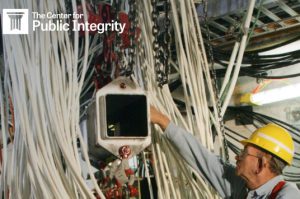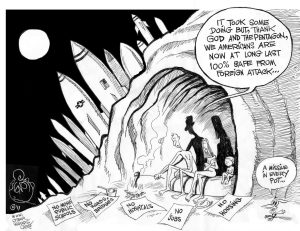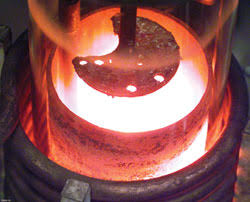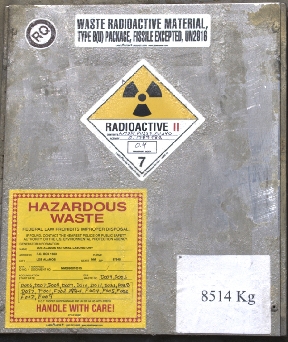A Los Alamos National Laboratory fact sheet touts the Lab as a plutonium “center of excellence”. However, the Laboratory Director paused operations in the Plutonium Facility on June 27, 2013. (The Plutonium Facility, called PF-4, is located at Technical Area 55 at Los Alamos National Laboratory (LANL). PF-4 is home for the Lab’s plutonium work, including nuclear weapons component production.) The pause was based on issues identified during safety reviews and findings from recent assessments. For one, the Defense Nuclear Facilities Safety Board (Board) performed a review of the Criticality Safety Program at Los Alamos National Laboratory (LANL) in May 2013. (The Board is an independent organization within the executive branch chartered with the responsibility of providing recommendations and advice to the President and the Secretary of Energy regarding public health and safety issues at Department of Energy (DOE) defense nuclear facilities.) This review identified significant non-compliances with DOE requirements and industry standards in the Lab’s Criticality Safety Program (CSP). In addition, this review identified criticality safety concerns around operations at the Plutonium Facility. The Board noted that some of these deficiencies are long standing and indicated flaws in federal oversight and contractor assurance. Much plutonium work, especially work with a high potential for criticality, will be stopped through the rest of 2013.
Nuclear criticality safety is defined as “protection against the consequences of an inadvertent nuclear chain reaction, preferably by prevention of the reaction.” The most potentially dangerous aspect of a criticality accident is the release of nuclear radiation if it maintains a self-sustaining nuclear chain reaction.
To date, the only thing self-sustaining is the Lab’s inability to address its criticality issues and yet still convince Congress to keep funding plutonium work there. To prevent bad things from happening, DOE’s regulations and directives require contractors to evaluate potential accident conditions and put in place appropriate controls and safety measures. History shows that the Los Alamos Laboratory just cannot do this, even though much of the work is performed on plutonium pits, the primaries of nuclear weapons. Even though actual need for this work has not been proven, the Lab has entrenched itself as the only place in the country where plutonium pits can be made, developed, and tested.
For fiscal year 2014, the budget request for nuclear ‘weapons activities’ at LANL was $1.4 billion. The exact amount that is spent on plutonium operations in PF-4 is unknown to us, but the budget request for 2014 for Directed Stockpile Work, which is where major parts of the plutonium operations are located, was $460 million. This is a 23% increase over last year’s budget. The funding pours into the Lab regardless of whether the Lab is actually doing any work, which is frequently stopped.
Here’s history of criticality problems and work stoppages at Los Alamos Laboratory:
In 2005, an assessment determined that LANL’s expert-based Criticality Safety Program (CSP) was not compliant with applicable DOE requirements and industry standards.
In 2006, LANS developed a Nuclear Criticality Safety Program Improvement Plan.
In 2007, in response to concerns raised by the Board’s staff, LANL determined that the authorized loading of vault storage rooms in PF-4 could lead to a critical configuration.
In 2008, the Government Accountability Office reported concerns about nuclear safety at LANL are long-standing. Problems included 19 occasions since 2003 where criticality safety requirements were violated, such as storing materials in quantities higher than safety limits allow, 17 of 19 of the site’s nuclear facilities operating without proper safety documentation, reported inadequacies in safety systems, radiological releases, and four enforcement actions for significant violations of nuclear safety rules.
Los Alamos Report for Week Ending April 3, 2009
LANL management placed the facility in stand-by mode until roughly 125 safety evaluations could be re-evaluated.
Los Alamos Report for Week Ending October 2, 2009
The Plutonium Facility was placed in standby mode because management declared the fire suppression system inoperable based on recent hydraulic calculations that concluded the system was not able to achieve the water coverage required. LANL had performed a system adequacy analysis in 2008. The hydraulic calculation completed for the system identified that 13 of approximately 100 hydraulic areas did not meet the requirement.
Los Alamos Report for Week Ending October 16, 2009
A general evacuation alarm was caused by a Criticality Alarm System signal because of a loss of all facility ventilation and failure of the Facility Control System at the Plutonium Facility. The facility was in standby mode during this event due to previously identified issues with the fire suppression system and, therefore, limited personnel were in the facility.
Los Alamos Report for Week Ending September 10, 2010
Operations in Plutonium Facility were suspended because potentially explosive ammonium nitrate was discovered in two filter ducts.
Los Alamos Report for Week Ending December 3, 2010
It was revealed that greater than 1000 items, or about 20%, of the total vault holdings are items packaged in potentially vulnerable containers with taped slip-top lids rather than in robust safety-significant containers that include a HEPA-filtered vent. The presence of these slip-top containers requires respirator use whenever operators access the vault. In FY10, LANL made meaningful progress in addressing these legacy materials.
In 2011, an event occurred at PF-4 in which fissile material handlers violated procedural requirements and criticality safety controls while moving and photographing plutonium rods.
Beginning in 2012, LANS experienced an 18-month exodus of criticality safety professionals from its criticality safety group. LANS currently employs 2 full-time and 2 part-time qualified criticality safety analysts, in addition to 3 part-time subcontractors—far fewer than the 17 criticality safety analysts it has determined to be necessary to support operations, meet mission goals, and maintain the CSP.
Los Alamos Report for Week Ending April 20, 2012
Plutonium Facility personnel use a software program called MAR Tracker to track plutonium that is used in the facility. A system engineer discovered an error in
MAR Tracker that caused only a small subset of applicable facility containers (roughly 1700 out of 13000 containers) to be checked during the required annual MAR surveillance. The Plutonium Facility was placed in Standby Mode.
Los Alamos Report for Week Ending June 15, 2012
LANL identified a number of fuel rods in TA-35 Building 27 that were not consistent with the criticality safety evaluation for the facility. Operations at this building had previously been suspended in late-May due to the discovery of three fuel rods that were not in the facility or institutional tracking systems.
Los Alamos Report for Week Ending December 14, 2012
LANL identified that the Criticality Safety Evaluations (CSEs) for two rooms did not adequately address the potential for interaction effects between storage locations. Plutonium Facility management suspended operations in these two vault rooms.
Los Alamos Report for Week Ending February 15, 2013
LANL began a focused training program (“boot camp”) to provide an intensive learning environment for new criticality safety staff. The program consisted of nine modules including: nuclear theory; criticality safety calculation methods; ANSI/ANS, DOE and LANL criticality safety standards and requirements; criticality safety evaluations; and criticality alarm and detection systems. This program along with on-the-job training and performance demonstrations was to provide a mechanism for achieving full qualification as a LANL criticality safety analyst. Conduct of the boot camp was part of the LANL corrective action plan for improving the nuclear criticality safety program.
Los Alamos Report for Week Ending May 3, 2013
The laboratory completed criticality safety assessments at LANL nuclear facilities. The review teams identified 3, 4, and 6 findings for TA-55, CMR, and Area G, respectively. In all cases, the assessments concluded adequate implementation of the Criticality Safety Program with the exception of identified findings. Notably, one of the findings at Area G identified that supervisors and operations center personnel did not have an adequate understanding of criticality safety requirements. Area G management paused operations based on this finding and conducted appropriate training to resolve this issue.
In May 2013, the staff of the Defense Nuclear Facilities Safety Board (Board) performed a review of the Criticality Safety Program at Los Alamos National Laboratory. This review identified significant non-compliances with applicable Department of Energy requirements and industry standards in the implementation of the Criticality Safety Program. The Board’s staff identified the following non-compliances during its review:
• Most criticality safety controls are not incorporated into operating procedures.
• Operators typically do not utilize written procedures when performing work.
• Fissile material labels do not list parameters relevant to criticality safety (e.g., mass).
• Some fissile material operations lack Criticality Safety Evaluations (CSEs).
• Some CSEs do not analyze all credible abnormal conditions.
Los Alamos Report for Week Ending June 28, 2013
The Laboratory Director paused programmatic activities at the Plutonium Facility. The pause was directed based on issues identified during procedural and criticality safety reviews and findings from recent assessments. Reviews at PF-4 have identified a number of procedural issues and the need for clarification and improvement of criticality safety controls.
Los Alamos Report for Week Ending July 26, 2013
Plutonium Facility personnel identified several criticality safety issues associated with recent construction activity. Even though plutonium work was paused, the Laboratory Director and the Facility Operations Director (FOD) approved construction activities that had the potential to affect nuclear materials.
For more information, please read the LAMonitor article By John Severance
Safety board visits LANL












